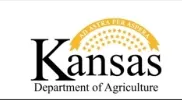Sept. 21, 2020
There’s still time to preserve garden produce
But the days are dwindling for canning summer’s fruit, vegetables
MANHATTAN, Kan. – Most Midwest gardeners are winding down the summer season, with the bounties of their work slowly dwindling to just a few more fruit or vegetables.
It also marks the last few weeks of work for those who prefer to store canned foods, said Kansas State University food safety specialist Karen Blakeslee.
“Canning season starts to wind down as gardens finish producing produce,” she said. “Don’t waste those last few tomatoes or winter squash. Many garden foods can be preserved by canning, freezing or dehydrating.”
Blakeslee is also the coordinator of K-State’s Rapid Response Center for food safety, which maintains a wealth of information on food preservation and recipe sources online.
Among the current recommendations for squeezing out a few more canned goods, she suggests:
- Pick the last tomatoes before a frost or freeze. Tomatoes left on the vine after a freeze should not be canned because their acidity changes. They should be eaten, frozen or dehydrated instead.
- Can green tomatoes just like ripe tomatoes. Add bottled lemon juice or citric acid to acidify green tomatoes. They can be used in a variety of pickled products or even pie filling.
- Pumpkin or winter squash must be canned in cubes only. There is no research to support canning mashed pumpkin or winter squash. Freeze it instead.
- Soup is a good use of many vegetables with added meat. Do not add thickeners, pasta, rice or dairy products before canning. Those can be added to the safely-canned soup mix later.
What next?
Once the canning season wraps up, Blakeslee suggests cleaning and maintaining equipment before putting it away for the year.
“Wash and clean canners to remove leftover food debris and hard water deposits,” she said. “Be sure all parts are clean and in working order now to save time next year.”
Unused jars and rings should be inspected for defects or damage. Blakeslee suggests crumpling clean paper towels inside canners to absorb odors and moisture. Then store equipment in a clean, dry location.
“Taking time to care for equipment now can help extend its life for years to come,” she said.
Learn more about food preservation at www.rrc.k-state.edu/preservation.
-30-
FOR PRINT PUBLICATIONS: Links used in this story
Rapid Response Center, www.rrc.k-state.edu
Food preservation and recipe sources, www.rrc.k-state.edu/preservation/index.html
K‑State Research and Extension is a short name for the Kansas State University Agricultural Experiment Station and Cooperative Extension Service, a program designed to generate and distribute useful knowledge for the well‑being of Kansans. Supported by county, state, federal and private funds, the program has county extension offices, experiment fields, area extension offices and regional research centers statewide. Its headquarters is on the K‑State campus in Manhattan. For more information, visit www.ksre.ksu.edu. K-State Research and Extension is an equal opportunity provider and employer.
Story by:
Pat Melgares
785-532-1160
For more information:
Karen Blakeslee
785-532-1673




